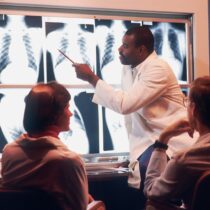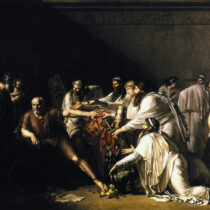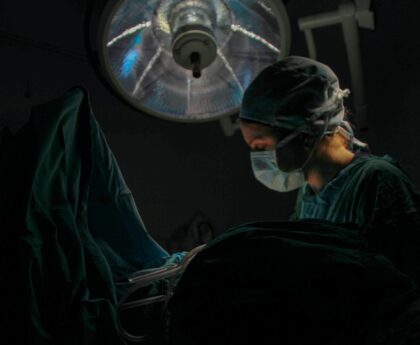In ancient Greece, the treatment of diseases was based more on philosophy than on a true understanding of human anatomy. Surgical intervention was rare, and dissection of cadavers was not yet practiced. As a result, physicians had little or no knowledge of the internal structure of the human being. It was not until the Renaissance that anatomy emerged as a science.
The Belgian physician Andreas Vesalius shocked many when he decided to study anatomy by dissecting corpses. Material for research had to be obtained under the cover of night. Scientists like Vesalius had to resort to methods that were not entirely legal. When Vesalius became a professor at Padua, he struck up a friendship with an executioner. Vesalius decided to pass on the experience he had gained from his years of skillful autopsies by writing a book on human anatomy. Thus the book “On the Structure of the Human Body” appeared. Published in 1538, it is considered one of the greatest medical works, as well as one of the greatest discoveries, because it is the first accurate description of the structure of the human body. It was the first serious challenge to the authority of the ancient Greek physicians. The book sold out in huge numbers. Educated people, even those far from medicine, bought it. The entire text was meticulously illustrated. Thus, information about human anatomy became much more accessible. Thanks to Vesalius, the study of human anatomy through autopsy became an integral part of doctors’ training. And that brings us to the next great discovery.
If anyone can be called the father of anatomy, it is, of course, Vesalius. Andreas Vesalius, naturalist, founder and creator of scientific anatomy, was one of the first to study the human body by dissection. All later anatomical acquisitions originated from him.
Andreas Vesalius discovered early an aptitude for anatomy. In his free time away from his university studies, he dissected and carefully dissected domestic animals with great passion. This passion did not go unnoticed. The court physician and friend of Andreas’ father, Nicolas Florent, who was interested in the young man’s fate, recommended that he study medicine, and only in Paris. Subsequently, in 1539, Vesalius dedicated his work “Epistle of Bloodletting” to Florent, calling him his second father.
The study of anatomy involves practice on human material. Vesalius needed dead human corpses for his anatomical studies. But there have always been great difficulties with this matter. This occupation, as we know, has never been a God-pleasing business and was traditionally rebelled against by the Church. Herophilus was probably the only physician who, while dissecting corpses at Museion, was not persecuted for it. Passionate about scientific research, he would go alone at night to the Cemetery des Innocents, the place of the execution of the Abbot Villar de Montfaucon, and there he would challenge the stray dogs for their half-rotten loot.




